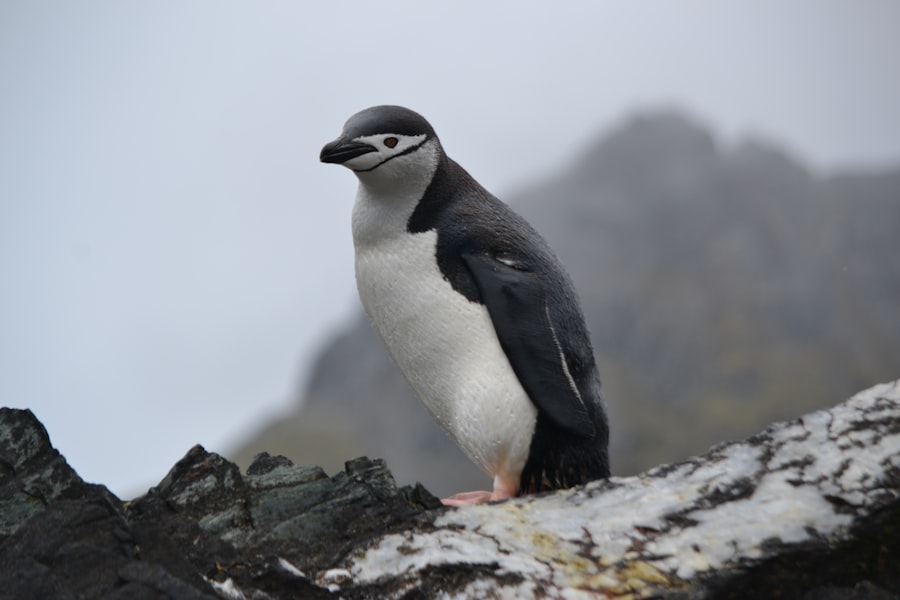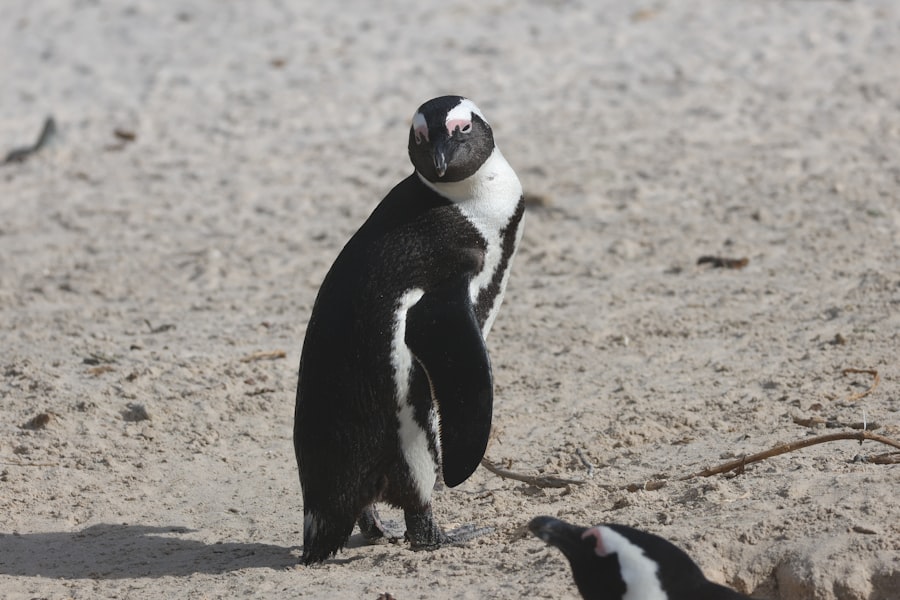
The Falkland Islands, an archipelago located in the South Atlantic Ocean, are a territory of the United Kingdom that has captured the imagination of travelers and historians alike. Comprising over 700 islands, the two main islands—East Falkland and West Falkland—are home to a small population of around 3,400 residents. The capital, Stanley, is situated on East Falkland and serves as the primary hub for both governance and tourism.
The islands are known for their rugged beauty, rich history, and unique wildlife, making them a fascinating destination for those seeking adventure and exploration. The allure of the Falkland Islands extends beyond their picturesque landscapes; they are steeped in a complex history marked by colonialism, conflict, and cultural exchange. The islands have been a point of contention between Argentina and the United Kingdom since the early 19th century, culminating in the Falklands War of 1982.
This historical backdrop adds depth to any visit, as travelers can explore not only the natural beauty but also the stories that have shaped this remote corner of the world. The combination of stunning scenery, diverse wildlife, and a rich tapestry of human history makes the Falkland Islands a unique destination for those willing to venture off the beaten path.
Key Takeaways
- The Falkland Islands are a remote archipelago in the South Atlantic, known for their stunning natural beauty and unique wildlife.
- The islands have a complex history, with a mix of British and Argentine influences, and are home to diverse landscapes including rugged coastlines, white sandy beaches, and rolling hills.
- Visitors to the Falkland Islands should not miss the chance to explore the capital city of Stanley, as well as the stunning landscapes of West Falkland and East Falkland.
- The islands are a haven for wildlife enthusiasts, with opportunities to see penguins, seals, and a variety of bird species in their natural habitats.
- In addition to its natural wonders, the Falkland Islands also offer a rich cultural and historical experience, with museums, memorials, and historic sites to explore. When visiting, be sure to pack for unpredictable weather and plan for limited transportation options.
History and Geography of the Falkland Islands
Early Exploration and Settlement
The history of the Falkland Islands is as tumultuous as it is intriguing. First sighted by European explorers in the 16th century, the islands were claimed by various nations over the centuries, including Spain, France, and Britain. The first permanent settlement was established by the British in 1765, but it was short-lived due to conflicts with Spain.
Disputed Territory and Geographical Characteristics
The islands changed hands multiple times before being re-occupied by Britain in 1833, a move that has been a source of ongoing dispute with Argentina, which claims sovereignty over the territory. Geographically, the Falkland Islands are characterized by their rugged terrain, with rolling hills, rocky coastlines, and numerous bays and inlets. The climate is classified as subpolar oceanic, which means it experiences cool temperatures year-round with frequent rainfall and strong winds.
Strategic Location and Cultural Identity
The islands are situated approximately 300 miles east of the coast of Argentina, making them relatively isolated yet strategically positioned in the South Atlantic. This isolation has contributed to the preservation of their unique ecosystems and has allowed for a distinct cultural identity to develop among the islanders.
Top Places to Visit in the Falkland Islands

One of the must-visit locations in the Falkland Islands is Stanley, the capital city. With its colorful buildings and charming streets, Stanley offers a glimpse into island life. Visitors can explore local shops, enjoy fresh seafood at waterfront restaurants, and visit historical sites such as Christ Church Cathedral, which features a unique whalebone arch.
The Falkland Islands Museum provides insight into the islands’ history, showcasing artifacts from various periods, including indigenous cultures and military history. Another notable destination is Volunteer Point, located on East Falkland. This area is renowned for its stunning beaches and abundant wildlife, particularly its large colony of king penguins. The journey to Volunteer Point often involves a scenic drive through picturesque landscapes, culminating in breathtaking views of the coastline.
Visitors can walk among the penguins in their natural habitat while respecting guidelines to ensure minimal disturbance to these remarkable creatures. The experience of observing these charming birds up close is unforgettable and highlights the islands’ commitment to wildlife conservation.
Unique Wildlife and Natural Wonders
| Location | Unique Wildlife/Natural Wonder | Significance |
|---|---|---|
| Galapagos Islands, Ecuador | Giant Tortoises | Endemic species found only in the Galapagos |
| Great Barrier Reef, Australia | Coral Reefs | Largest coral reef system in the world |
| Serengeti National Park, Tanzania | Great Migration | Annual migration of millions of wildebeest and zebras |
| Amazon Rainforest, South America | Biodiversity | Home to millions of species of plants, animals, and insects |
The Falkland Islands are home to an astonishing array of wildlife that thrives in its diverse habitats. The islands’ remote location has allowed many species to flourish without significant human interference. Among the most iconic inhabitants are the various species of penguins, including gentoo, magellanic, and king penguins.
These flightless birds can be seen waddling across beaches and nesting in colonies throughout the islands. The sight of thousands of penguins gathered together is a spectacle that draws nature enthusiasts from around the globe. In addition to penguins, the Falklands boast an impressive variety of seabirds, including albatrosses and petrels.
The islands serve as crucial breeding grounds for these birds, which can be observed soaring gracefully above cliffs or nesting on rocky outcrops. The surrounding waters are rich in marine life, providing opportunities for whale watching and seal spotting. Species such as southern right whales and elephant seals can often be seen along the coastlines during certain seasons.
The combination of terrestrial and marine ecosystems creates a vibrant tapestry of life that is both captivating and essential for ecological balance.
Cultural and Historical Sights
The cultural heritage of the Falkland Islands is deeply intertwined with its colonial past and ongoing identity struggles. One significant site is the Battle Memorial in Stanley, which commemorates those who lost their lives during the 1982 conflict between Argentina and Britain. This poignant monument serves as a reminder of the sacrifices made during this turbulent period and reflects the complex emotions surrounding national identity on both sides of the dispute.
Another important cultural landmark is Gypsy Cove, located just outside Stanley. This picturesque cove not only offers stunning views but also holds historical significance as a site where British troops landed during the war. Visitors can explore walking trails that lead to viewpoints overlooking the cove while learning about its historical context through informative signage.
The blend of natural beauty and historical significance makes Gypsy Cove a compelling destination for those interested in understanding the islands’ past.
Practical Tips for Visiting the Falkland Islands

Traveling to the Falkland Islands requires careful planning due to their remote location and limited accessibility. Most visitors arrive via cruise ships or flights from mainland South America, particularly from Punta Arenas in Chile or Buenos Aires in Argentina. It is advisable to book flights well in advance, especially during peak tourist seasons from November to March when wildlife viewing opportunities are at their best.
Once on the islands, visitors should be prepared for variable weather conditions. Layered clothing is essential to accommodate sudden changes in temperature and wind conditions. Additionally, sturdy footwear is recommended for exploring rugged terrains and coastal areas where wildlife is abundant.
In terms of accommodations, options range from hotels in Stanley to more rustic lodges on outer islands that offer unique experiences for those looking to immerse themselves in nature. Dining options are available primarily in Stanley, where fresh seafood is a highlight due to its proximity to rich fishing grounds.
Engaging with local residents can provide valuable insights into island life and culture, enhancing the overall experience for visitors eager to learn more about this captivating destination. The Falkland Islands offer an unparalleled blend of natural beauty, rich history, and unique wildlife that captivates all who visit. From exploring historical sites to witnessing remarkable animal behavior in their natural habitats, every aspect of these islands contributes to an unforgettable journey into one of the world’s most intriguing territories.
Costa Rica, known for its lush biodiversity and stunning landscapes, offers a different yet equally fascinating travel experience. From its rich rainforests to the vibrant wildlife, Costa Rica has much to explore. For more detailed insights into what Costa Rica has to offer, including key facts and must-visit places, check out the article Costa Rica Facts and Places to Visit. This could be a great resource for planning your next adventure or simply expanding your knowledge about another captivating part of the world.
FAQs
What is the Falkland Islands (Islas Malvinas)?
The Falkland Islands (Islas Malvinas) are a British overseas territory located in the South Atlantic Ocean. The islands are known for their natural beauty and diverse wildlife.
How many islands make up the Falkland Islands (Islas Malvinas)?
The Falkland Islands (Islas Malvinas) consist of approximately 778 islands, with East Falkland and West Falkland being the two largest islands.
What is the capital of the Falkland Islands (Islas Malvinas)?
The capital of the Falkland Islands (Islas Malvinas) is Stanley, located on East Falkland.
What is the population of the Falkland Islands (Islas Malvinas)?
As of 2021, the population of the Falkland Islands (Islas Malvinas) is estimated to be around 3,400 people.
What are some popular sights and attractions in the Falkland Islands (Islas Malvinas)?
Popular sights and attractions in the Falkland Islands (Islas Malvinas) include the penguin colonies, stunning landscapes, historical sites such as the Falkland Islands Museum, and opportunities for outdoor activities such as hiking and birdwatching.
What is the official language of the Falkland Islands (Islas Malvinas)?
The official language of the Falkland Islands (Islas Malvinas) is English.
What is the currency used in the Falkland Islands (Islas Malvinas)?
The currency used in the Falkland Islands (Islas Malvinas) is the Falkland Islands pound (FKP), which is pegged to the British pound.



